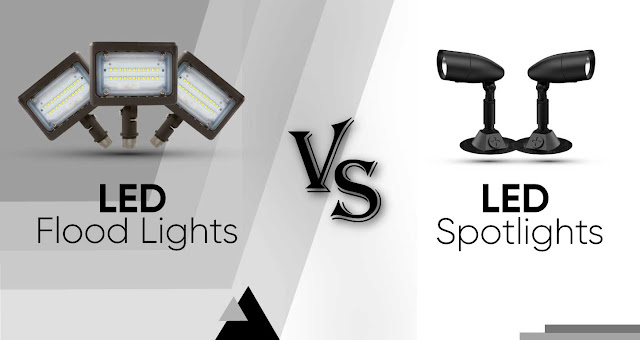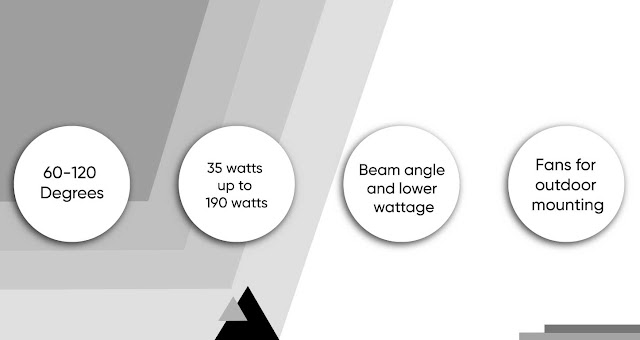When doing an outdoor lighting project, there are so many options to choose from. Among all available lights, the most energy-efficient ones are easily LED technology. Once you know LED is the way to go, you have to know what beam you need, how wide a beam is necessary, and how to calculate the beam spread you'll need. Let's look at a few of the key differences between an outdoor LED flood lights and the LED spotlight.
The difference in beam angle will determine what you can use each for, and it essentially comes down to personal preference in most cases. The only time that it matters is when picking out your LED flood light and LED spotlight options.
Flood Lights: Floodlights typically have a beam angle between 60-120 degrees, wide enough to cover a large area without much adjustment. The spotlights we offer all have a beam angle of 7 or 8 degrees or even 15 degrees for the super focused beam. With such a narrow beam, it can be hard to adjust the angle.
As far as wattage goes, the LED floodlight options range from 35 watts to 190 watts or more for commercial projects. On the other hand, the LED spotlights that we offer are only 10-24 watts, and that is because of their focused beams and the need to light up less area.
Floodlights are typically used around the perimeter of a structure or building, whereas spotlights are often mounted on the interior ceiling for focused lighting that is not affected by direct sunlight. LED floodlights have a modular design with large heatsinks and fans to be mounted outside.
LED Flood Lights vs. LED Spotlights
Floodlights have a typical beam angle of 60-120 degrees, whereas spotlights have a very narrow beam angle
Floodlight options range from 35 watts up to 190 watts or more, while spotlight options are 10-24 watts
Floodlights are used on the perimeter of a building exterior and typically need to be mounted outside, whereas spotlights can be used on the interior ceiling with a narrow beam angle and lower wattage
Floodlights have a modular design with big heatsinks and fans for outdoor mounting.
So remember that if you need to light up a wide area, then the floodlight might be what you're looking for. If you need a very narrow beam with a lot of focused light, then the spotlight would be the way to go. Most residential LED projects will use spotlights, whereas most commercial or industrial LED projects will benefit from floodlights.
LED Spotlight vs. LED Flood Light -
Spotlight options have a very narrow beam angle of 7 degrees to 15 degrees, whereas floodlights have a wider beam angle of 60-120 degrees
Spotlight options range from 10 watts to 24 watts, while floodlight options are typically 35 watts or more
Spotlights can be used on the interior ceiling for focused lighting in commercial and industrial areas. Floodlights are typically used around the perimeter of a structure or building exterior and should be mounted outside
Spotlight options have a modular design with heatsink and fans for indoor use, whereas floodlights should be mounted outside where they can benefit from larger heatsinks and fans.
When you need to replace existing lighting fixtures on your property, make sure you check out all of the LED outdoor lighting options we offer at Super Bright LED Lights. We have options for residential, commercial, retail, and more that you can browse through on our website.


Comments
Post a Comment